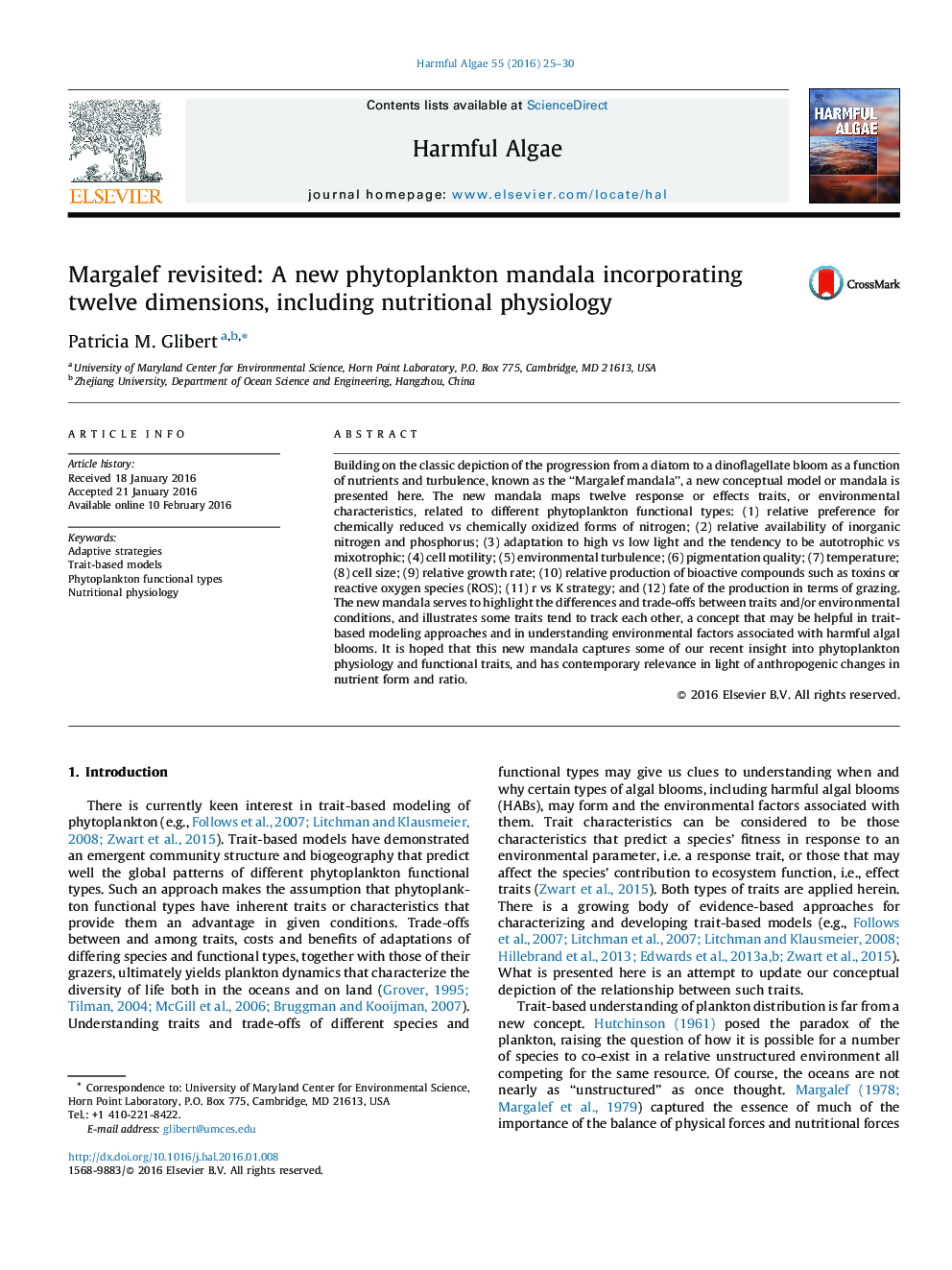| Article ID | Journal | Published Year | Pages | File Type |
|---|---|---|---|---|
| 4545126 | Harmful Algae | 2016 | 6 Pages |
•Margalef's classic phytoplankton mandala was updated.•This mandala incorporates nutrient ratios and form among other traits and environmental factors.•This mandala highlights trade-offs between traits and/or environmental conditions.•This mandala may apply to trait-based modeling and in understanding factors associated with HABs.
Building on the classic depiction of the progression from a diatom to a dinoflagellate bloom as a function of nutrients and turbulence, known as the “Margalef mandala”, a new conceptual model or mandala is presented here. The new mandala maps twelve response or effects traits, or environmental characteristics, related to different phytoplankton functional types: (1) relative preference for chemically reduced vs chemically oxidized forms of nitrogen; (2) relative availability of inorganic nitrogen and phosphorus; (3) adaptation to high vs low light and the tendency to be autotrophic vs mixotrophic; (4) cell motility; (5) environmental turbulence; (6) pigmentation quality; (7) temperature; (8) cell size; (9) relative growth rate; (10) relative production of bioactive compounds such as toxins or reactive oxygen species (ROS); (11) r vs K strategy; and (12) fate of the production in terms of grazing. The new mandala serves to highlight the differences and trade-offs between traits and/or environmental conditions, and illustrates some traits tend to track each other, a concept that may be helpful in trait-based modeling approaches and in understanding environmental factors associated with harmful algal blooms. It is hoped that this new mandala captures some of our recent insight into phytoplankton physiology and functional traits, and has contemporary relevance in light of anthropogenic changes in nutrient form and ratio.
